Welcome
Electrical Substations
Regarding electrical substation buildings criteria of design, we could identify 2 types in terms of delivery methods, built-up (in-situ) and pre-fabricated ones (fabricated at our yard).
Treverdo collaborates with EPC corporations, End Users, and OEM switchgear manufacturers in the design, fabrication, installation and commissioning works of electrical substations for their projects.
Our 30 years' of expertise allow us to work in the IEC and ANSI/NEMA markets, including blast resistant buildings. The design is developed in Revit to achieve BIM 3D, and with Navisworks for BIM 4D and 5D. BIM 6D is achieved by our customized solution on asset tracking and management. Our substation design includes but not limited to the grounding system as well as lightning protection system according to country's regulations and requirements.
Our proposal's advantages:
1. Optimization of building spaces, CAPEX and OPEX.
2. Prefabrication solution removing all site construction interfaces and risk due weather related delays and others.
3. Turnkey solution.
4. Best in class ROI.
5. Project schedule reduction.
Section
Isolator
Pharmaceutical
Valves
Heat Exchanger
Computational Fluid Dynamics
Multi-physics is defined as the coupled processes or systems involving more than one simultaneously occurring physical fields and the studies of and knowledge about these processes and system. Multi-physics is a practice built on mathematics, physics, application, and numerical analysis. The mathematics involved usually contains partial differential equations and tensor analysis. The physics refers to common types of physical processes, e.g., heat transfer, pore water movement, concentration field, stress and strain, dynamics, chemical reactions, electrostatics, and magneto-statics.
We use different methods according to the needs, FVA (Finite Volume Analysis), FEM (Finite Element Method), etc. CFD is a tool to resolve fluid mechanics within a system is intended to be studied as a digital prototype. We use best software resources in the market, OpenFOAM, SIMSCALE and Autodesk CFD.
Our team have extensive experience in 2 phase flow system analysis.
The purpose of these analysis is to predict and control the dynamics of the fluids involved. Examples of uses:
- Electrical Heat Tracing (EHT) in pipelines, vessels, etc.
- Avoid harmful pressure waves on process equipment (water hammer).
- Reduce pressure drop or determine flow rate in confined flows.
- Determine shear stresses within a fluid bulk.
- Determine vortex or turbulence conditions on measurement equipment.
- Determine phase separation in two phase flows, such as bio reactors.
- Building verification for Green Mark.
- Clean rooms HVAC design validation and efficiency.
- Isolators and other process equipment design verification for pharmaceutical industry.
And many others…
Single Point of Failure and
Failure Mode and Effect Analysis.
Single Point of Failure (SPoF)
The first step comprises the auditing of designs and as-built installations, to find components whose single failure may lead to malfunctioning of a system affecting critical and key services/areas.
The approach makes use of Fault Tree Analysis (FTA) to model all systems through a boolean-type diagram.
The second step would be performed after the condition of components has been assessed by recalculating failure probabilities if any relevant difference is found in the configuration or condition of components, particularly considering the human factor.
This step will provide relevant information since many of the failures that occur in well-designed systems have a human-related initiating event, arising from operational and/or maintenance practices.
Failure Mode and Effects Analysis (FMEA)
FMEA is performed according to IEC 60812 standard, which provides the procedural steps to perform the analysis, and that will be carried out for each of the systems involved in the study.
The second step for FMEA comprises a re-assessment of qualitative probabilities according to the actual status of components and equipment, and the production of a revised report.
SPoF
FMEA
Epoxy Flooring System
Best team for epoxy and polyurethane floors. Our team has the know how of substrate analysis, mechanical bonding methods and right solution advise to customers for failed epoxy applications. We are frequently called to audit floors in Singapore, where epoxy/PU have failed in their application. We review client's Specification, as well as Method Statement and Risk Assessment documents from main contractor, together with existing or new substrate characteristics, before our advise.
We do repair failed floors from other applicators. Best coving works in the market.
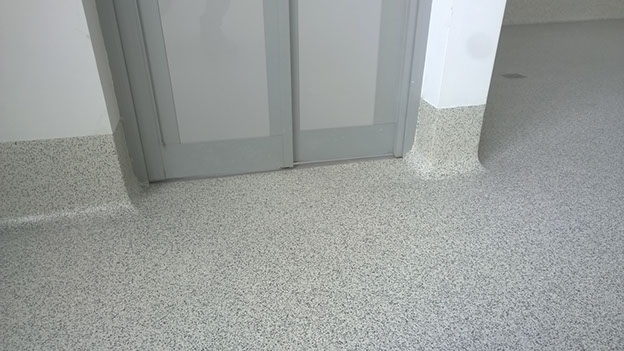
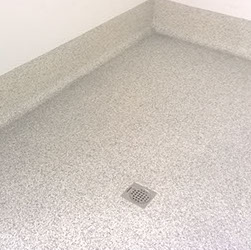
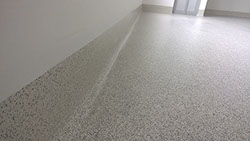

Explosion Proof Material
Our products have successfully served the oil and gas, pharmaceutical and chemical plants market for more than 65 years.
We understand hazardous or classified areas from the design basis, material selection, installation, to maintenance works.
Hazardous Areas are defined as places where fire or explosion may occur due to flammable gases, or vapors from flammable liquids, combustible dusts, or ignitable fibers present in such locations in quantities that are sufficient to produce explosive or ignitable mixtures. Therefore electrical equipment which is to be installed in such classified locations should be specially designed, tested and certified by third party authority to ensure it does not initiate an explosion, due to arcing contacts or high surface temperature.
In general for International use or installations, the driving standard is IEC, however might be some cases where a customer request NEC/UL.
Material to be used in hazardous locations in Europe must comply and show the CE mark within its standardized label and the code numbering of the certifying body (NCB, National Certification Body). The CE marking is complemented with the Ex mark, followed by the indication of the Group, Category and, the indication of related gases (G) or dust (D) where applicable. Certificates are produced by third party certification bodies only.
Contact us for more information on these products and services.
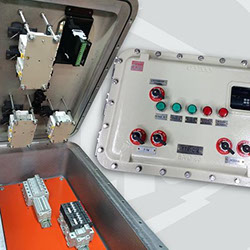
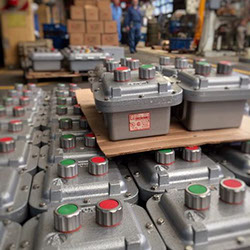
"...Experience is not a unit of time... We work with the best."
